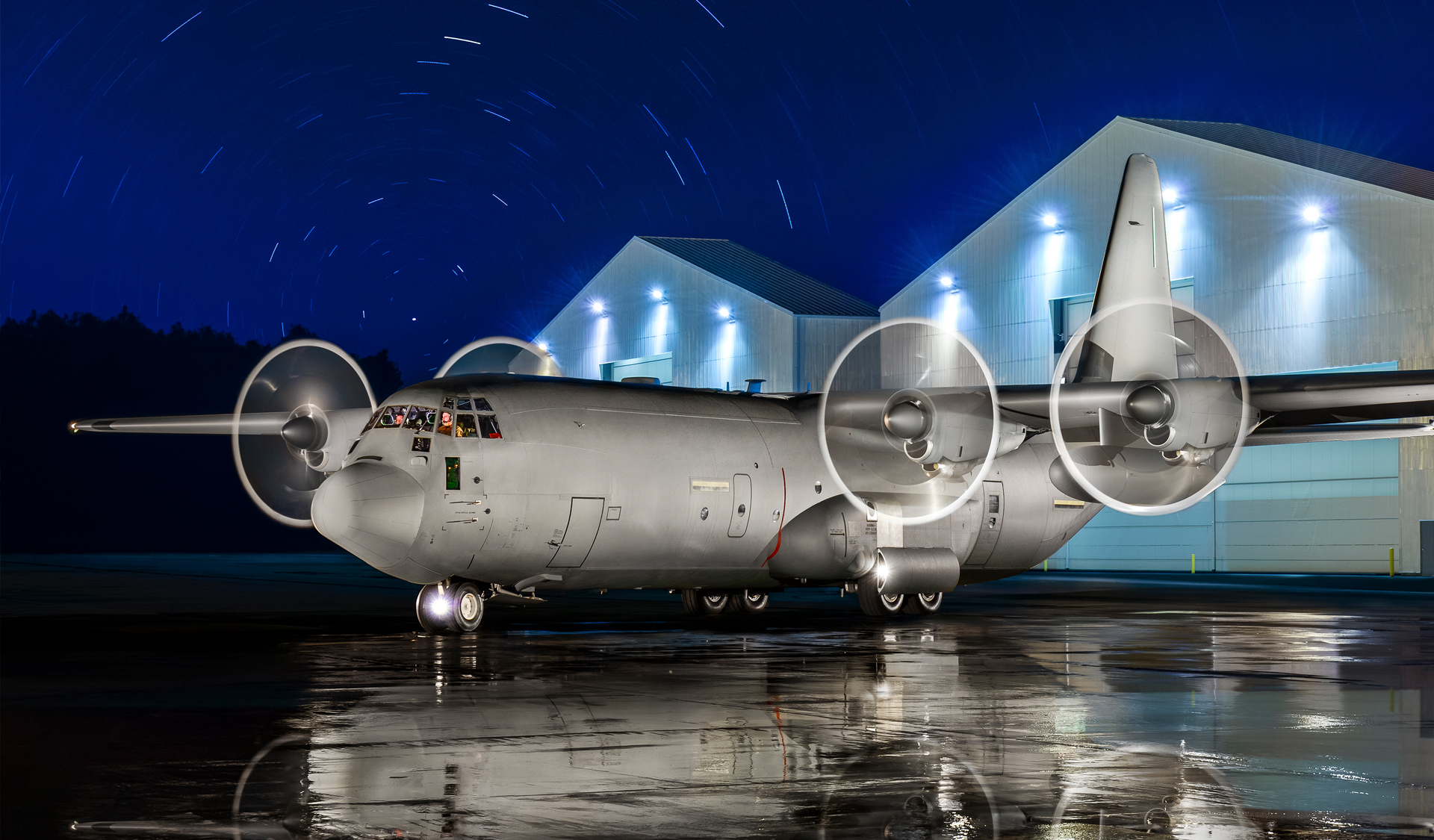SOURCE: IDRW.ORG TEAM

In a significant move to strengthen defense ties between the United States and India, Lockheed Martin’s CEO, Jim Taiclet, recently held a high-level meeting with Indian Prime Minister Narendra Modi. During the meeting, Taiclet advocated for a government-to-government deal aimed at supplying 60-80 C-130J Hercules aircraft to the Indian Air Force (IAF). This proposal comes as part of India’s search for a suitable Medium Transport Aircraft (MTA) to enhance its logistical capabilities.
Lockheed Martin’s C-130J Hercules is already a familiar asset within the IAF, which operates 12 of these versatile aircraft. Known for its reliability and multi-role capabilities, the C-130J Hercules has proven its worth in various missions ranging from humanitarian assistance to tactical airlift operations. However, the competition for India’s MTA requirement is fierce, with the C-130J Hercules contending against other formidable offerings such as Embraer’s C-390M and Airbus’s A-400M.
Continue readingSOURCE: IDRW.ORG TEAM

C J Varghese, a visionary innovator from Kerala, has once again proven his mettle in the field of advanced defense technology by securing his fifth patent for the APS (Active Protection System) Hard-Kill shooter. This latest patent marks a significant milestone in Varghese’s illustrious career, highlighting his relentless pursuit of excellence and innovation.
The system is designed to offer comprehensive 360-degree protection against various forms of attack, including direct and top-down assaults. This cutting-edge technology is particularly crucial in modern combat scenarios where threats can emerge from any direction and at any angle.
Continue readingSOURCE: AFI
Hindustan Aeronautics Limited (HAL), a global leader in defence equipment manufacturing, is making a strong impression at the Farnborough Air Show with its impressive display of ‘Make in India’ technology. The company’s chalet is a focal point, showcasing the pinnacle of Indian aerospace engineering.
A standout exhibit is the scaled model of the HAL Tejas fighter jet, India’s first indigenously designed and manufactured fighter aircraft. This cutting-edge platform represents a significant milestone in the country’s defense capabilities and has drawn considerable attention from aviation industry experts and potential customers alike.
Continue readingSOURCE: AFI

Air Marshal Ashutosh Dixit, Deputy Chief of the Air Staff, undertook a two-day visit to Hyderabad on July 23-24, 2024, to assess the progress of key defense projects. His itinerary included visits to DRDO, HAL, and TASL, where he reviewed critical aspects of India’s self-reliance initiatives in the aerospace and defense sector.
A significant highlight of the visit was the granting of production clearance for ASTRA missiles at DRDO. This crucial development marks a major step forward in bolstering India’s air defense capabilities. At HAL, the Air Marshal focused on reviewing the progress of avionics indigenization, a critical component of enhancing the self-sufficiency of the Indian Air Force.
Continue readingSOURCE: AFI

The Society of Indian Defence Manufacturers (SIDM) delegation made significant strides in strengthening India’s position in the global aerospace and defense industry on the second day of the Farnborough International Airshow 2024.
Led by Mr. Neeraj Gupta, Chairman of the SIDM International & Export Committee, the delegation engaged in fruitful discussions with leading Original Equipment Manufacturers (OEMs), including BAE Systems, Rolls-Royce, Dassault Aviation, Lockheed Martin, and Leonardo.
Continue readingSOURCE: AFI

A high-level delegation from Panama, headed by renowned economist Dr. Porfirio Ellis Bonilla, paid a visit to Bharat Electronics Limited (BEL)’s Ghaziabad unit yesterday. The delegation was warmly welcomed by Ms. Rashmi Kathuria, General Manager & Unit Head of BEL-Ghaziabad, who along with the Integrated Management Development (IMD) team provided a comprehensive overview of BEL’s diverse business segments and its extensive product portfolio.
During the visit, the Panamanian delegation was given a detailed presentation highlighting BEL’s capabilities in various domains. Of particular interest was the demonstration of the BFSR-SR radar, a cutting-edge, man-portable, battery-powered surveillance and acquisition system.
Continue readingSOURCE: AFI

In a recent press conference, a Pakistani journalist’s question about the ‘nameplates in Kanwar Yatra’ issue elicited a notably detailed and timely response from US State Department Spokesperson Matthew Miller. This exchange has sparked discussions and speculations among observers, with many questioning the apparent preparedness and coordination behind the interaction.
During the press conference, the Pakistani journalist, reading from his phone, asked Miller about the US stance on the recent reports regarding the Kanwar Yatra nameplates. Miller’s response was prompt and thorough:
“We have seen those reports. We have also seen the reports that the Indian Supreme Court on July 22 issued an interim stay on the implementation of those rules. So they’re not actually in effect. Speaking generally, we are always committed to promoting and protecting universal respect for the right of freedom of religion and belief for all anywhere in the world. And we have engaged with our Indian counterparts on the importance of equal treatment for members of all religions.”
Continue readingSOURCE: PTI

China is making inroads into key choke points along the Indian Ocean and obstructing the right to freely navigate the waters, an influential American lawmaker has said, expressing concerns over increasing Chinese investment in South Asia.
Congresswoman Young Kim, who is chairman of the Subcommittee on Indo-Pacific in the House Foreign Affairs Committee, said South Asia holds immense significance for the US foreign policy and national security interests.
Continue readingSOURCE: UNI.

Union Minister of State for Defence Sanjay Seth on Wednesday said that Defence Research and Development Organisation (DRDO) should aim to make the country a global leader in futuristic defence technologies. The Minister while addressing the officials during his visit to DRDO here, appreciated the commitment and dedication of DRDO scientists in making the country self-reliant, an official statement said.
He also appreciated the DRDO initiatives to promote the participation of academia and industry in defence technologies. Meanwhile, Secretary, Department of Defence R&D and Chairman DRDO Samir V Kamat gave him a detailed presentation on the recent achievements, major ongoing projects and the future roadmap.
Continue readingSOURCE: AFP

Soaring high across a gorge in the rugged Himalayas, a newly finished bridge will soon help India entrench control of disputed Kashmir and meet a rising strategic threat from China. The Chenab Rail Bridge, the highest of its kind in the world, has been hailed as a feat of engineering linking the restive Kashmir valley to the vast Indian plains by train for the first time.
But its completion has sparked concern among some in a territory with a long history of opposing Indian rule, already home to a permanent garrison of more than 500,000 soldiers.
Continue readingSOURCE: IANS

National Security Advisor (NSA) Ajit Doval attended the state funeral of Nguyen Phu Trong, the General Secretary of Communist Party of Vietnam who passed away on July 19, in Hanoi on Thursday. NSA Doval conveyed India’s condolences personally to the Vietnamese President To Lam, Prime Minister Pham Minh Chinh and the bereaved family.
During their meeting on Wednesday, Vietnam’s PM Pham Minh Chinh expressed his “sincere thanks” to the government and people of India for their kind gesture towards late General Secretary Nguyen Phu Trong by sending high-ranking officials to attend the state funeral and also the Indian Parliament for taking time to commemorate the General Secretary on July 22.
Continue readingSOURCE: ANI

The Indian Army contingent will participate in the 21st edition of the multinational joint military exercise Khaan Quest 2024, which is scheduled to be held in Mongolia later this week.
The joint military exercise will be held from July 27 to August 9. Khaan Quest 2024 will be aimed at enhancing the interoperability of the participating nations during peacekeeping missions in a multinational environment.
Continue readingSOURCE: PTI

National Conference leader Omar Abdullah on Thursday said the Modi government has not been able to change anything regarding negative travel advisories as Jammu and Kashmir remained a “target” of the US State Department travel advisories.
“So much for ‘naya J&K’. For all the talk of normalcy, peace, tourism & the G-20 tamasha in Srinagar, J&K continues to be the target of US state department travel advisories. The Modi government has been able to change nothing,” Abdullah posted on X.
Continue readingSOURCE: PTI

The Punjab Police and Army personnel on Wednesday conducted a search operation after a woman spotted seven “suspicious” men in a village in Pathankot district. A sketch of one of the suspects has also been released, said a senior police official.
The woman informed the police that seven “suspicious” men came to her house in Fangtoli village and demanded water from her and left after some time. Pathankot Senior Superintendent of Police Suhail Qasim Mir said the search operation was conducted by police along with the Army in the area.
“We are maintaining high alert,” Mir told PTI.
SOURCE: IANS

Two over-ground workers (OGWs) of Jaish-e-Muhammad (JeM) were arrested and legal action was taken against four people for supporting terrorist activities in Jammu and Kashmir’s Kathua district, said police on Thursday.
A police statement mentioned, “In a significant breakthrough in our ongoing efforts to counter terrorist activities, Kathua Police at police station Malhar have arrested two OGWs for supporting terror-related activities. These individuals were also found to have purposefully withheld crucial information by not disclosing it to police in time. Both individuals deliberately chose not to disclose vital information to the police, thereby obstructing efforts to prevent terrorist actions.”
Continue reading